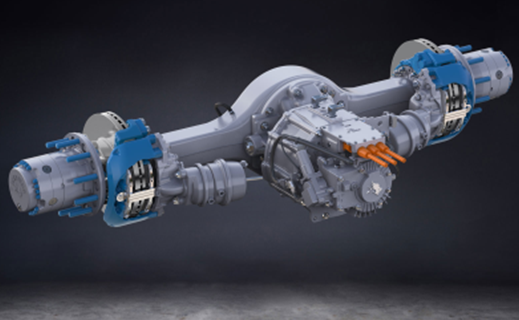
Victimized by the global pandemic, business dropped 23% in the first six months of this year for the Neo Magnequench business unit of Neo Performance Materials, widely considered a bellwether of the magnetic materials industry. Revenues for Magnequench dropped to $68.8 million from $89 million for the same period in 2019. Tonnage dropped 19% to 2,295 tons from 2,812 a year ago. The most recent three months, from April through June, declined at a greater rate with revenues falling 27% from $41 million to $30 million.
The results were announced August 10 as the company reported its financials for the second quarter of 2020 which ended June 30. One of three business units of the company, Magnequench fared slightly better than Neo as a whole. Overall, the company’s quarterly revenue dropped 33.4% from $101.7 million a year ago to $67.7 million this year, resulting in a quarterly loss of $63.4 million. For the full six months, overall revenues dropped 25% to $158 million from $210 million a year ago.

“While our processing facilities are all operational and ready to return to normal operating levels, our customers at large have remained cautious with orders and inventory management given the impacts of COVID-19,” said Constantine Karayannopoulos, Neo’s president and CEO. “Despite these headwinds, Neo remained operationally profitable at the adjusted EBITDA line during what we would consider the peak impact of the pandemic.”
“We continue to hear from our customers that Neo’s advanced industrial materials are even more important today, particularly in terms of empowering our customers’ ability to successfully navigate and compete in a post-COVID world. The need for clean air, improved fuel economy, better and more sustainable technologies that can help address climate change and strengthened regional supply chains has only accelerated.”
Only recently becoming CEO of the Toronto-based company, Karayannopoulos was named to his position in July. Formerly the chairman, he stepped down from that role upon the departure of previous CEO, Geoffrey Bedford. Karayannoupoulos has worked in senior executive positions at Neo and its predecessor companies for more than 20 years, including as president, and CEO of Neo Material Technologies from 2005 until NEM was acquired in 2012 for US $1.3 billion.
Magnequench volumes have suffered from extended customer shutdowns and slowing demand was seen across most applications, said Karayannopoulos. However, some improved stability was evident in the hard disk drive segment and other factory automation applications. Magnequench also continued to see growth in its magnet-making capacity and magnet sales, particularly with respect to sales from the magnet business purchased in 2019, where the current product line addresses laptop computers and consumer electronics, and has been on a growth trajectory and gaining market share over the past year. In addition, Magnequench benefited from various cost-cutting initiatives including reducing production shifts at its manufacturing locations.
The acquisition last year was of Asia Magnets, known as SAMAG, for about $10 million. A privately owned manufacturer of compression molded NdFeB bonded magnets in Chuzhou, China located west of Shanghai, the acquisition was seen as an opportunity to leverage Neo’s ability to produce high-performance magnetic powders and magnets. SAMAG had constructed a new production facility in 2016 and recently completed a US$2.9 million capacity expansion, including the installation of new manufacturing equipment and additional production footprint.
At the time, Greg Kroll, executive vice president of Neo Magnequench, noted: “This acquisition is compelling for the Neo Magnequench business as it immediately expands our existing magnet manufacturing knowhow and enhances our production capability, and SAMAG’s production will benefit from Neo’s technical expertise, extensive global sales team and networks. The acquisition will expand our ability to work more closely with magnet users from concept through the entire product lifecycle. It also helps us respond to a clear market demand for a compression molded magnet supplier that can both produce at competitive cost and deliver superior technical and development expertise for current and next-generation applications.”
For more info, see www.neomaterials.com.



